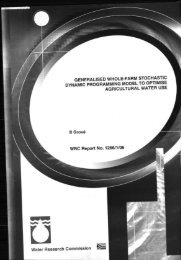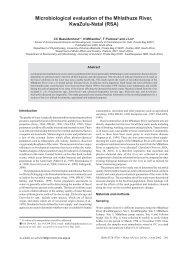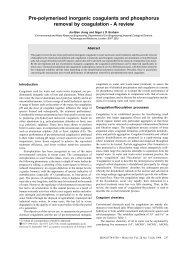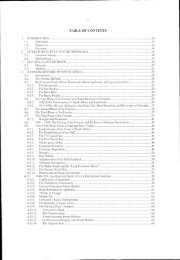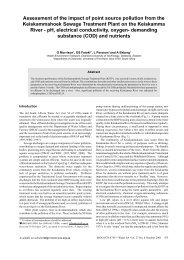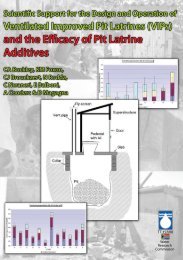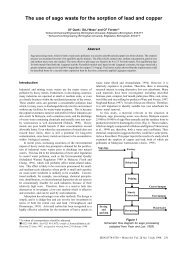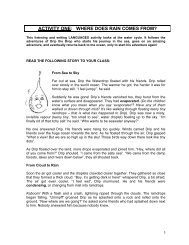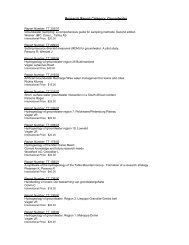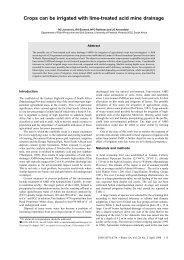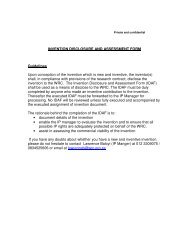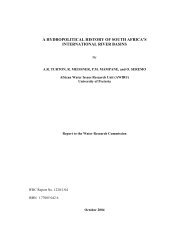A Methods Manual for the Collection, Preparation and Analysis of ...
A Methods Manual for the Collection, Preparation and Analysis of ...
A Methods Manual for the Collection, Preparation and Analysis of ...
Create successful ePaper yourself
Turn your PDF publications into a flip-book with our unique Google optimized e-Paper software.
8. Choice <strong>of</strong> substrata (detail)Sampling should be representative ra<strong>the</strong>r than r<strong>and</strong>om. Operators should first decide whichareas in a river reach should be excluded <strong>and</strong> <strong>the</strong>n search within <strong>the</strong> remaining areas <strong>for</strong>substrata with obvious diatom growths, ei<strong>the</strong>r by appearance or by feel.Diatom growths can be identified by a golden-brown coloured mucilaginous layer on <strong>the</strong>substratum or, if this is not visible, by <strong>the</strong> feel <strong>of</strong> <strong>the</strong> rocks, which will be slimy or slipperybecause <strong>of</strong> <strong>the</strong> mucilage exuded by <strong>the</strong> diatoms <strong>for</strong> locomotion or attachment (seeIntroduction).8.1 Samples should be taken from five or more cobbles (diameter > 64, ≤ 265 mm) orsmall boulders (> 256 mm diameter) where possible.8.2 It is also acceptable to sample vertical faces <strong>of</strong> man-made structures such as quays <strong>and</strong>bridge supports in <strong>the</strong> absence <strong>of</strong> appropriate stones at a particular site. O<strong>the</strong>r hardman-made surfaces, such as bricks, can also be sampled.8.3 Alternative substrata, such as submerged or aquatic macrophytes, can also besampled, providing <strong>the</strong> stems are permanently submerged <strong>and</strong> not contaminated withsediment. The type <strong>of</strong> macrophyte from which <strong>the</strong> sample is taken should always benoted because it is important to sample <strong>the</strong> same species or, if this is not possible, <strong>the</strong>same morphological type <strong>of</strong> macrophyte.A useful identification guide <strong>for</strong> <strong>the</strong> identification <strong>of</strong> aquatic macrophytes is:Gerber A, Cilliers CJ, van Ginkel C<strong>and</strong> Glen R (2004) Easy identification <strong>of</strong> aquaticplants. A guide <strong>for</strong> <strong>the</strong> identification <strong>of</strong> water plants in <strong>and</strong> around South Africanimpoundments. Department <strong>of</strong> Water Affairs, Pretoria.This publication is available from:Director; Resource Quality Services (RQS)Department <strong>of</strong> Water Affairs <strong>and</strong> ForestryPrivate Bag X 313, Pretoria 0001Tel: 012 808 9500or:Annelise Gerbergerbera@dwaf.gov.za8.4 In order to compare downstream community composition, it is important to samplefrom similar substrata along a river, as diatom communities vary according tosubstratum8.5 Samples should be taken in such a way as to obtain <strong>the</strong> greatest possible degree <strong>of</strong>uni<strong>for</strong>mity between sites.23



